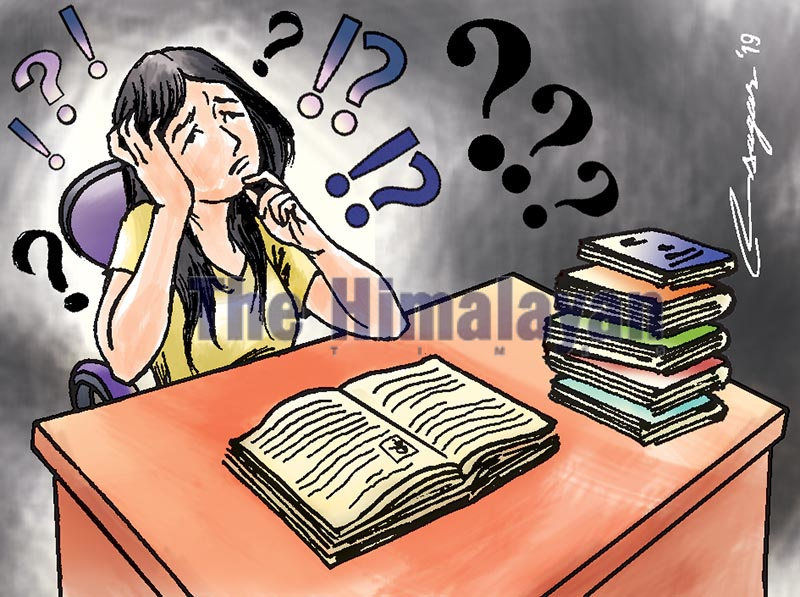Learning difficulties in children: Concentration a big challenge
Reading, writing and math aren’t the only skills impacted by learning disorders. Other types of learning disabilities involve difficulties with motor skills, that is, movement and coordination, understanding spoken language, distinguishing between sounds, and interpreting visual information
Problems with reading, math, maps, charts, symbols and pictures make learning difficult.
Difficulty in school doesn’t always stem from a learning difficulty. A learning difficulty could be due to problem with intelligence or motivation or factors like anxiety, stress or other psychological disorders in co-morbidity. Learning difficulty is also known as learning disability, which is not affected by intelligence or motivation. In fact, most of the kids are just as smart as everyone else. Their brains are simply wired differently. This difference affects how they receive and process information. Children with learning disabilities see, hear and understand things differently. This can lead to trouble in learning new information and skills, and putting them to use. The most common types of learning disabilities involve problems with reading, writing, math, reasoning, listening and speaking.
Intelligence is an important factor in learning. Anxiety, depression, stressful events, emotional trauma and other conditions that affect concentration make learning a challenge.
Attention-deficit hyperactivity disorder (ADHD) can disrupt learning. Children with ADHD often have problems sitting still, staying focussed, following instructions, being organised and completing homework. Autism is the difficulty in mastering certain academic skills. Children with autism spectrum disorders may have trouble communicating, reading body language, learning basic skills, and making eye contact. Schizophrenia can lead to learning difficulty, which makes it difficult for children to pay attention.
Learning disabilities, or learning disorders, are an umbrella term for a wide variety of learning problems. There are two types of learning disabilities in reading, or dyslexia. Basic reading problems occur when there is difficulty understanding the relationship between sounds, letters and words. Reading comprehension problems occur when there is inability to grasp the meaning of words, phrases and paragraphs. Signs of reading difficulty in children include problems with letter and word recognition, understanding words and ideas, reading speed and fluency, and general vocabulary skills.
Learning disabilities in math, or dyscalculia, vary greatly depending on the child’s other strengths and weaknesses. A child’s ability to do math will be affected differently by a language learning disability, or a visual disorder or difficulty with sequencing, memory or organisation. A child with a math-based learning disorder may struggle with memorising and organising numbers, operation signs and number “facts”. Children with math learning disorders might also have trouble with counting principles, such as, counting by twos or counting by fives, or have difficulty telling time.
Learning disabilities in writing, or dysgraphia, refers to physical difficulty in forming words and letters. Expressive writing disability indicates a struggle to organise thoughts on paper. They include problems with neatness and consistency of writing, accurately copying letters and words, spelling consistency, writing organisation and coherence.
Reading, writing and math aren’t the only skills impacted by learning disorders. Other types of learning disabilities involve difficulties with motor skills (movement and coordination), understanding spoken language, distinguishing between sounds, and interpreting visual information.
Motor difficulty, dyspraxia, refers to problems with movement and coordination, whether they are with fine motor skills (cutting, writing) or gross motor skills (running, jumping). In order to run, jump, write or cut something, the brain must be able to communicate with the necessary limbs to complete the action. A child might have motor coordination disability, including problems with physical abilities that require hand-eye coordination, like holding a pencil or buttoning a shirt.
Language and communication learning disabilities, or aphasia/dysphasia, involve the ability to understand or produce a spoken language. Language is also considered an output activity because it requires organising thoughts in the brain and calling upon the right words to verbally explain something or communicate with someone else. Children having language-based learning disorder involve problems with verbal language skills, such as the ability to retell a story and the fluency of speech, as well as the ability to understand the meaning of words, parts of speech and directions.
Auditory and visual processing problems are the primary means of delivering information to the brain, a process sometimes called “input.” If either the eyes or the ears aren’t working properly, learning can suffer. Auditory processing disorder is the inability to distinguish subtle differences in sound, or hearing sounds at the wrong speed, making it difficult to sound out words and understand the basic concepts of reading and writing. Visual processing disorder is a problem in the visual perception, which includes missing subtle differences in shapes, reversing letters or numbers, skipping words, skipping lines, misperceiving the depth or distance, or having problems with eye-hand coordination.
Sah is a clinical psychologist






